Bike journey to capture unique Black Country shots
 Tom Hicks
Tom HicksFrom what started as photographic musings of the industrial and often striking landscape of the Black Country while out on a bike, artist Tom Hicks has gone on to capture the quirky beauty of the region.
Armed with a smartphone, Hicks has spent almost a decade touring the area he is from, documenting its buildings, misspelt signs and unique shops under the guise of Black Country Type.
His sharp, sunlit images have garnered international attention, leading to books and exhibitions.
"It's quite endless because it just depends on which direction I go on my bike that day and what I happen to see or who I get chatting to," he said.
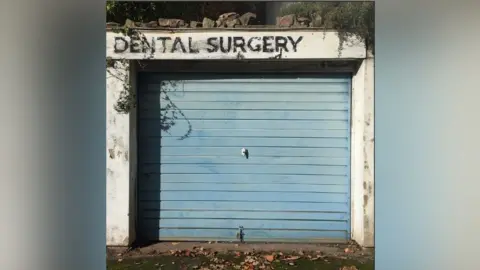 Tom Hicks
Tom Hicks"On the basic level it's landscape photography. It's the landscape of the Black Country and the human landscape really," he said.
"It's a fine art aesthetic, but there's a popularism in it as well - so the funny signs and the misspelling. I love a misspelt sign."
The Black Country's personality is not just represented by misspelt signs, as Hicks also captures closed shops once offering their goods and instances of people's attempts to make do and mend have been captured.
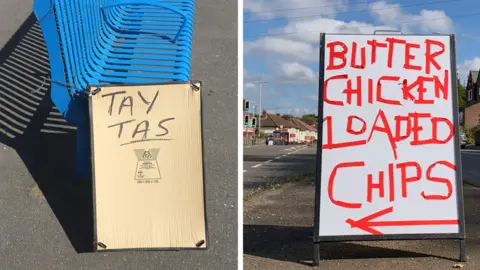 Tom Hicks
Tom Hicks"So if you've got a hole in the wall, a lot of people will just attach a door to it or a piece of wood and maybe write something on it - aspects of the region are a lot like the developing world," Hicks said.
Roaming the canals on his bike about eight years ago, Hicks, from Kingswinford, began capturing what he saw, with a particular appreciation for factory signages.
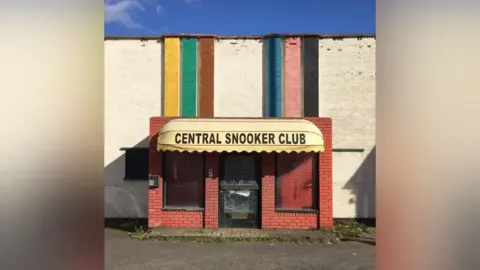 Tom Hicks
Tom Hicks"A lot of factories in this region, they wouldn't pay a graphic designer to do their sign, they'd do it themselves and that goes back to I'd say the 20s and 30s.
"I think a lot of the factories would have a technical drawing department and say 'we'll get you to do it', so a lot of the signage was kind of unique to that factory and that area."
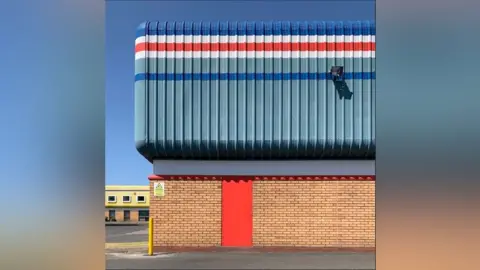 Tom Hicks
Tom HicksHicks said he was keen not to come across as a tourist and acknowledged "there's a fine line between showing what a place is like" and making fun of it.
"I think there's hopefully a warmth to what I do and but if anyone said to me, why are you taking a picture of this broken factory, I'll say well, because it's there. It is broken."
Hicks said the different towns he had visited all had "different atmospheres" and he had some favourites.
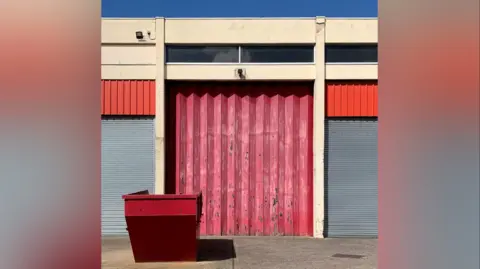 Tom Hicks
Tom Hicks"Cradley Heath is always great. There's just always a lot going on there.
"I know Wolverhampton really well because it's where I've worked for years, but then there's still areas that I haven't really touched upon like Old Hill and Netherton."
While on his travels he said he could see "traces of the pride" in the area caught up in the now unloved buildings.
"In places like Wednesbury, if you look at the the art gallery it's really grand, although it's not been maintained as well as it should have been.
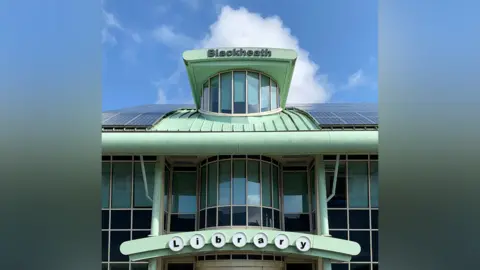 Tom Hicks
Tom Hicks"Then the factories will be really grimy, but you'll you'll often see the remnants of the customer-facing area which is often quite a really nice Victorian building.
"So it's juxtapositions that make it unique, but also the humour as well. I think there's always something humorous about the place."
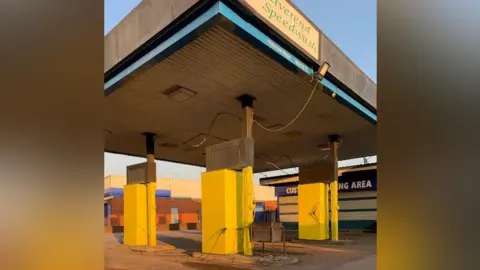 Tom Hicks
Tom HicksWill he run out of material as the landscape continues to evolve and make way for new developments?
"It's quite an unexplored place, I think. There are pockets of people who have done really great work in the region. But not many people doing it from within.
"So I think that's probably the difference, but I won't run out of stuff, although it's only a small place really."
He added: "I'll go to a place and there's say, three or four things that are 'this is brilliant' and the people who work in these places or live in those areas don't really see it as that remarkable because I think they're used to it, but particularly some of the industrial scenery in this area, it's just crazy."
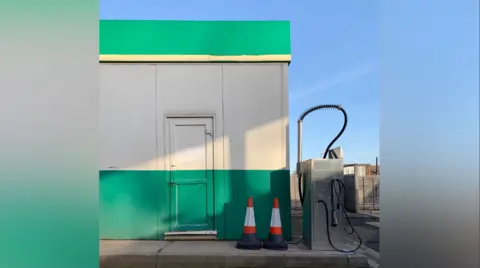 Tom Hicks
Tom HicksFollow BBC Birmingham on BBC Sounds, Facebook, X and Instagram.
